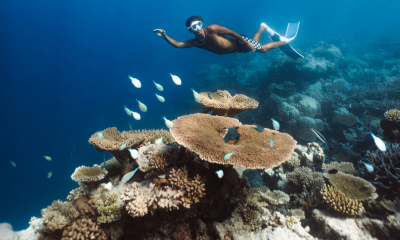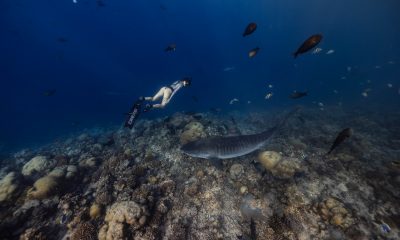Featured
Small islands like Maldives may not disappear under rising seas, researchers find

In recent years, the leaders and inhabitants of many small-island nations like the Maldives, Kiribati and Tuvalu have warned that climate change is an existential threat to their homelands, fearing they could disappear under rising seas as the planet warms.
But according to research published on Wednesday, small, low-lying islands dotted around the Pacific, the Caribbean and Asia — often seen as the places most vulnerable to global warming — can naturally adapt and raise themselves above encroaching waves.
A three-year study led by Britain’s University of Plymouth, which looked at coral reef islands such as the Maldives and the Marshall Islands, found that tides move sediment to create higher elevation, a process that may keep the islands habitable.
“The dominant discourse is that of an island drowning, and the outcome of that is coastal defences and relocation … We think there are more trajectories for the islands,” said lead author Gerd Masselink, professor of coastal geomorphology at the University of Plymouth.
Low-lying island states are judged to be at greatest risk from increasingly powerful storms and rising oceans, with some making preparations to resettle their people within decades.
Many are already building sea walls, moving coastal villages to higher ground, appealing for international aid or setting up projects to repair damage caused by climate change impacts.
The world’s tens of thousands of coral reef islands are mostly uninhabited, but are home to about a million people who largely rely on fishing or tourism for a living, said Masselink.
Although the islands have different structures due to varying weather and wave patterns, they tend to be relatively small, low-lying, sandy or gravel islands sitting on top of a living reef platform.
They were formed hundreds of thousands of years ago by waves moving and piling up reef material or sediment to create higher ground — a natural defence mechanism that continues, he noted.
For the study published in the journal Science Advances, scientists built a model coral reef and island in a laboratory tank with rising water levels, and used computer simulations to replicate how such islands respond to higher seas in reality.
The results suggest that by opting for climate-resilient infrastructure that allows for occasional flooding, like buildings on stilts and movable houses, islanders with enough space could adapt to their shifting environment, Masselink said.
Dredging coral sand and sediments found in island lagoons and moving it to beaches could also aid the natural process of raising the islands, he told the Thomson Reuters Foundation.
Sea walls, however, are compromising the natural ability of the islands to adjust to rising sea levels, he said.
“If you stop the flooding of the islands, you also stop the movement of the sediment on top of the island,” he said.
Most coral islands do not depend on agriculture, and import food and fresh water, making saltwater contamination during flooding less of an issue, he noted.
Hideki Kanamaru, natural resources officer with the UN Food and Agriculture Organisation in Asia-Pacific, said the study provided a “new perspective” on how island nations could tackle the challenge of sea-level rise.
But even if islands can adapt naturally to higher seas by raising their own crests, humans still need to double down on global warming and protection for island populations, he added.
Climate change in Maldives
Maldives comprises 1,190 islands in 20 atolls spread over 900km in the Indian Ocean. Of these, just 199 islands are inhabited with a population of slightly over 515,000 people. The highest point of land is two metres or about six feet above sea level.
The atolls of Maldives are ringed by the seventh largest coral reefs in the world and among the richest in species diversity. The reefs host over 1,900 species of fish, 187 coral species, and 350 crustaceans.
Drawn by its pristine beaches, underwater coral reefs, and spectacular marine wildlife, this small island-nation attracts some 1.5 million tourists annually. In recent years, nature-based tourism has served as the engine of growth for the economy and accounts for about 70 per cent of GDP.
Geography has made the Maldives especially vulnerable to the consequences of climate change. Being land scarce and low lying, the country is exposed to the risks of intensifying weather events such as damage caused by inundation, extreme winds, and flooding from storms.
With the melting of polar ice caps, the Maldives is also exposed to the risks of sea-level rise.
Rising sea temperatures also threaten the coral reefs and cause bleaching and death, with the most severe damage in areas that are stressed by pollutants, or damaged by physical disturbance.
Vulnerability to climate change hazards has been magnified by damage to coral reefs which has in turn impaired their protective function, thus a negative cycle of impact.
Note: The above article is largely based on reporting by Reuters. The cover photo has been sourced from Visit Maldives.
Featured
Kuramathi Maldives announces private wellness programmes with Imron Zulfikar
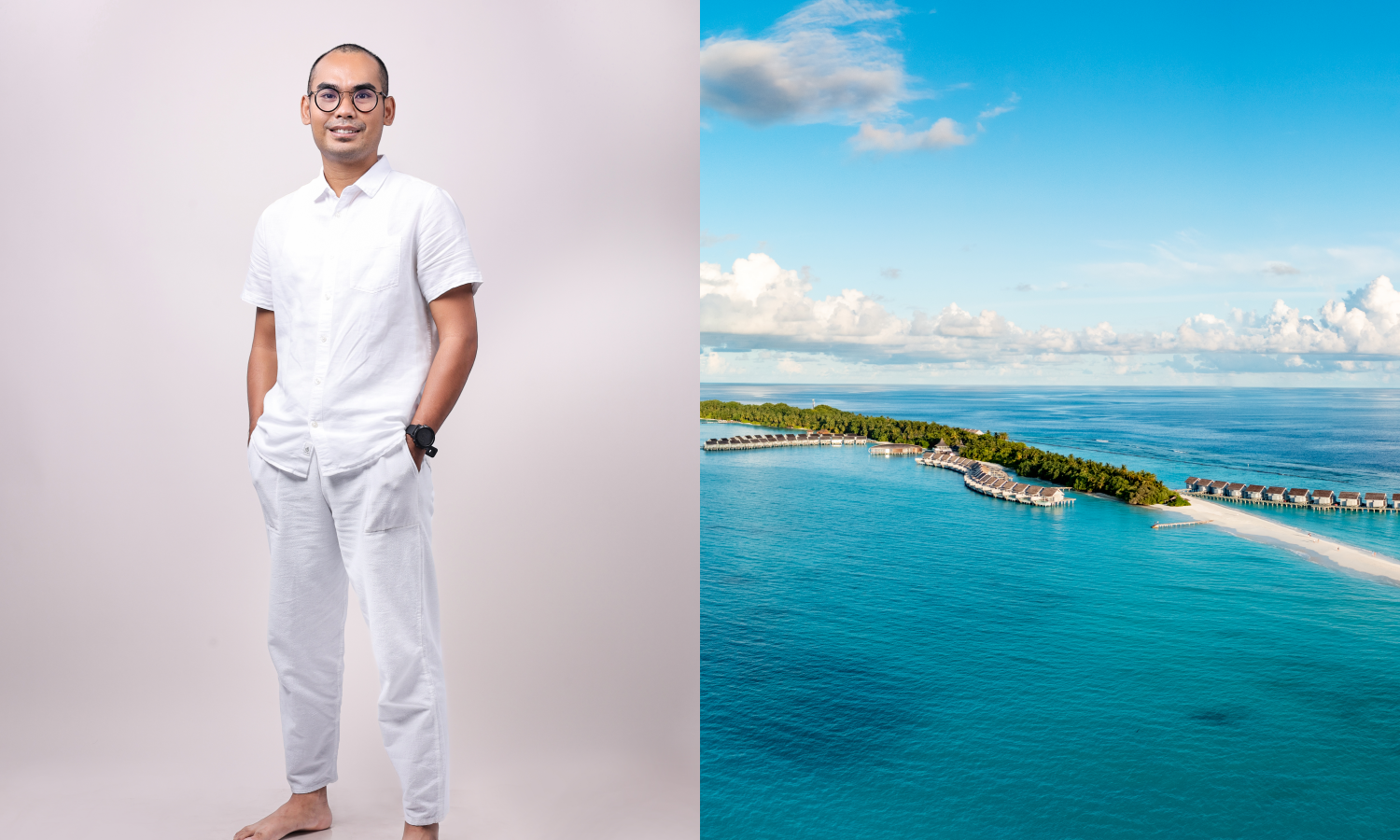
Kuramathi Maldives has announced the arrival of esteemed holistic wellness practitioner Imron Zulfikar, who will undertake an exclusive residency at the resort from 15 December 2025 to 3 January 2026. During this period, guests will have the opportunity to participate in bespoke wellness experiences crafted by a recognised expert in integrative health.
Throughout his residency, Imron will conduct a series of private wellness sessions designed to restore balance, promote renewal, and enhance long-term wellbeing. His practice brings together ancient therapeutic traditions and contemporary fitness science, resulting in personalised programmes that support harmony, mobility, and emotional resilience. Signature offerings include:
- Watsu Water Healing Journey: A restorative treatment conducted in warm water, combining elements of shiatsu, massage, and gentle movement to release deep tension, soothe the nervous system, and foster a sense of tranquillity.
- Chakra Balance Therapy: A holistic session that aligns mind and body through crystal healing, guided meditation, and calming massage techniques.
- Meridian Deep Release Massage: A therapeutic blend of deep tissue massage and acupressure aimed at easing chronic tension, improving flexibility, and stimulating energy flow.
- Accu Glow Facial: A rejuvenating facial incorporating acupuncture and customised skincare to activate collagen production, detoxify the skin, and enhance natural luminosity.
- Oriental Slim Detox Massage: A treatment grounded in Traditional Chinese Medicine, combining acupuncture and massage to promote lymphatic drainage and support detoxification.
Imron is an accomplished wellness lifestyle coach and holistic fitness specialist with more than ten years of experience in acupuncture, tension release therapies, yoga, Pilates, and personal training. His integrative methodology nurtures physical alignment, emotional balance, and overall vitality.
He has worked with numerous luxury resorts and an impressive roster of high-profile clients, including Serena Williams, Emma Watson, Richard Branson, and members of the UAE Royal Family. Celebrated for his intuitive approach and refined technique, Richard Branson has previously referred to Imron as having “golden hands.”
Kuramathi Maldives looks forward to offering guests this exceptional opportunity to engage in transformative, individually tailored wellness experiences during Imron’s residency.
Drink
Felice Capasso brings award-winning mixology to The St. Regis Maldives Vommuli this February

The St. Regis Maldives Vommuli Resort will host World Class Global Bartender of the Year 2025, Felice Capasso, for an exclusive Tastemaker Series collaboration from 4–5 February. The partnership further strengthens the resort’s position as a destination for discerning travellers seeking craftsmanship, cultural depth, and refined experiences.
Located on a private island in the Dhaalu Atoll, The St. Regis Maldives has established a contemporary interpretation of island glamour. Its signature villas include some of the most coveted accommodations in the Indian Ocean, notably the John Jacob Astor Estate—one of the Maldives’ largest overwater residences—and the tranquil, beachfront Caroline Astor Estate. Each estate offers generous living spaces, expansive pools, and panoramic views, reflecting the resort’s dedication to elevated, residential-style luxury.
Within this sophisticated environment, The Whale Bar—an iconic overwater structure—will serve as the setting for Capasso’s arrival. As evening falls, the venue will adopt a vibrant Latin-inspired ambience, where guests will enjoy family-style small plates, bespoke cocktails, and rare vintages on tap while the sunset illuminates the lagoon. In this atmospheric setting, Capasso will unveil an exclusive cocktail menu for his bar takeover, blending classical technique with modern creativity.
On the following day, the resort will host an intimate Masterclass led by Capasso, centred on rum. The session will explore the spirit’s history, its regional expressions, and the narrative approach that distinguishes exceptional mixology. His expertise—rooted in precision, intuition, and storytelling—offers guests a rare opportunity to engage with a leading figure in the global bar industry.
This collaboration forms part of the resort’s ongoing Tastemaker Series, which brings influential creators and innovators to the island. By welcoming talents such as Felice Capasso, The St. Regis Maldives Vommuli Resort continues to craft immersive, evocative experiences that embody the distinctive spirit of St. Regis.
Drink
Sun Siyam Olhuveli unveils Milano, Olive Bar and Crust & Flame on Dream Island
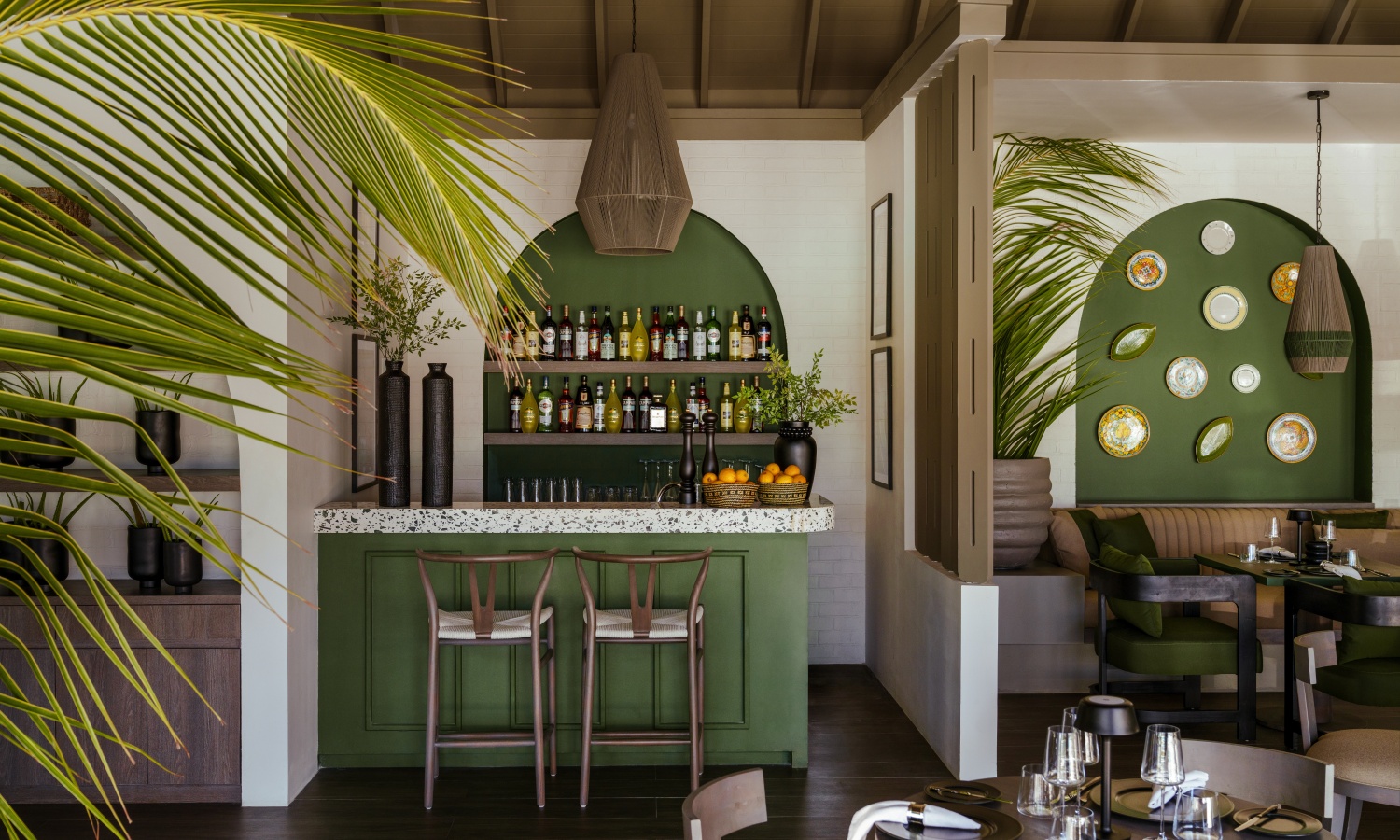
Sun Siyam Olhuveli has introduced three new dining and social venues on its Dream Island — Milano, Olive Bar, and Crust & Flame — each conceptualised by the award-winning Studio Sixty7. Together, the venues bring a contemporary expression of coastal European style to the Maldives, blending refined design, effortless island living, and a sense of community that positions Dream Island as the resort’s newest lifestyle and entertainment hub.
Milano – An Italian Soul with a Front-Row Kitchen
Milano celebrates the warmth and generosity of Italian dining, presented through a coastal aesthetic that feels both relaxed and refined. The open kitchen serves as the heart of the restaurant, where guests can watch chefs craft handmade pasta, simmer traditional sauces, and prepare wood-fired dishes. The experience is intimate and engaging, reflecting the sincerity of Italian cooking.
Studio Sixty7 designed the space with an olive-green palette, arched features, textured off-white plaster, linen drapery, and sculpted timber furnishings. Deep green crittall-style glazing adds a quiet elegance, while patterned floors create a gentle visual rhythm. As evening falls, woven pendant lights warm the room, making Milano ideal for leisurely lunches and romantic dinners. Every design detail balances Italian flair with Maldivian tranquillity.
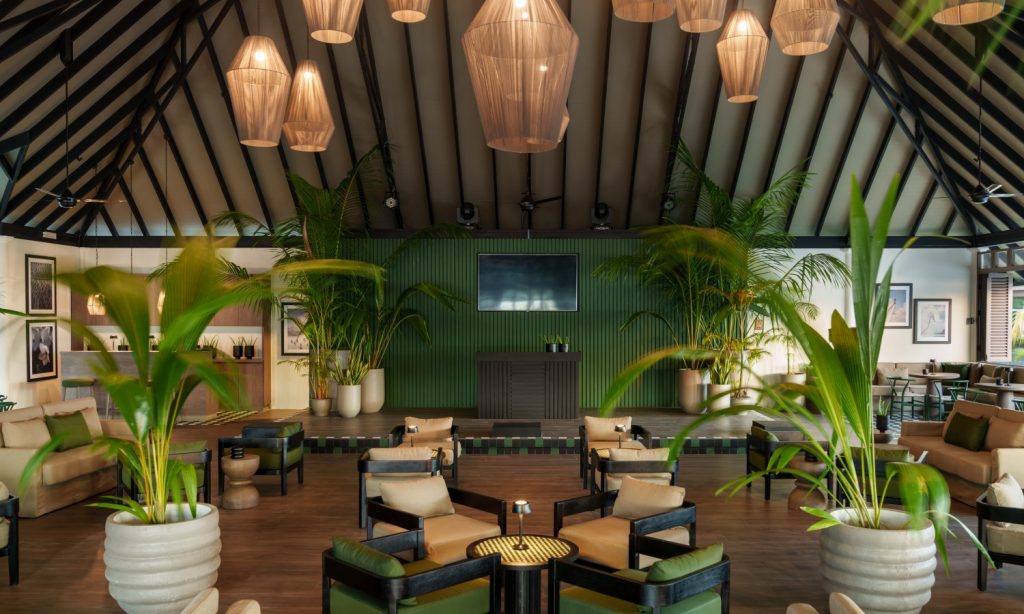
Olive Bar – The New Entertainment Pulse
At the centre of Dream Island’s social energy, Olive Bar offers a refreshed take on family entertainment, hosting nightly performances from acoustic musicians and cultural acts to lively DJ sets. By day, it provides a relaxed lounge environment; by night, it transforms into a vibrant social hub.
The bar’s design embraces coastal openness, featuring timber shutters, adaptable lounge seating, abundant greenery, and natural textures that reflect Studio Sixty7’s craftsmanship-driven approach. Gentle ambient lighting completes the atmosphere, creating a welcoming setting for conversation, laughter, and shared experiences.
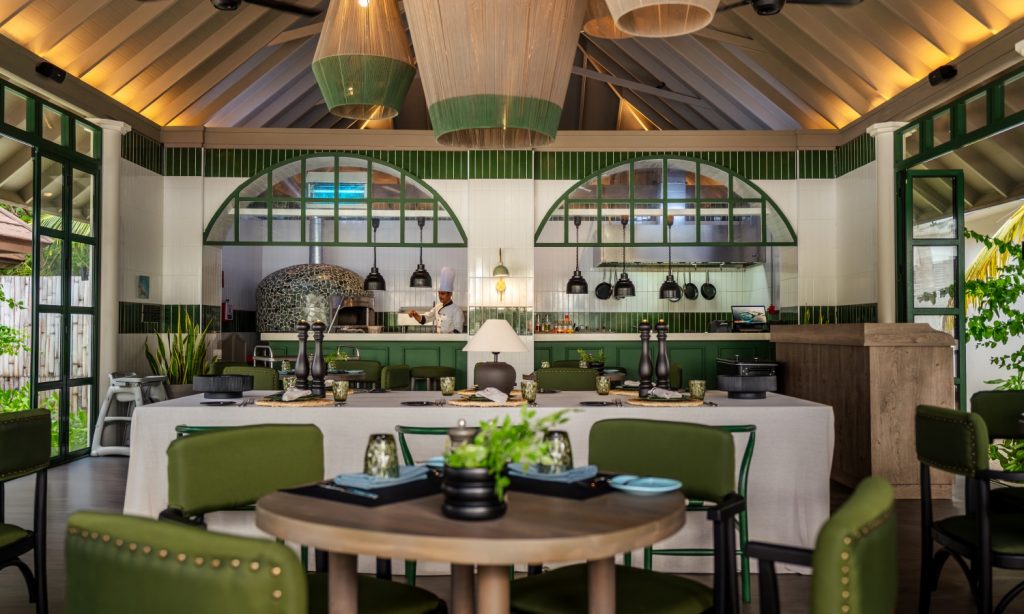
Crust & Flame – Casual, Beachside, and Comfort-Driven
Crust & Flame offers a relaxed beachside dining experience centred around artisanal brick-oven pizzas and contemporary light dishes. Its striking emerald-and-sage terrazzo pizza oven serves as the visual anchor of the venue, glowing subtly in natural light as chefs prepare fresh creations throughout the day.
Muted olive and white tiles, moss-toned upholstery, and dark timber seating create a coastal trattoria feel, while maintaining a distinctly Maldivian beach ambience — toes in the sand, ocean breeze drifting through the space, and a focus on simple, well-crafted comfort food.
Reflecting on the creative direction, Lee McNichol, Co-founder of Studio Sixty7, noted that the aim was to craft spaces that feel like a gentle exhale — warm, textured, softly lit, and subtly inspired by European coastal landscapes. Co-founder Jose Rivero added that the intention was to build venues that feel lived-in and soulful, where guests naturally settle into the experience rather than simply dine or watch a performance.
Hassan Adil, General Manager of Sun Siyam Olhuveli, commented: “Our vision for Dream Island was to create a place where guests immediately feel the rhythm of island life — relaxed, social, and full of positive energy. Milano, Olive Bar, and Crust & Flame each offer something distinct, yet together they form a cohesive atmosphere that encourages connection and enjoyment. It is Olhuveli at its most effortless and playful.”
With the launch of these venues, Dream Island evolves into a dynamic culinary and social destination where design, flavour, and ambience come together seamlessly. This development reflects Sun Siyam Olhuveli’s continued journey toward contemporary lifestyle hospitality, grounded in the warmth and authenticity of Maldivian service.
Sun Siyam Olhuveli now offers more than twenty restaurants and bars across its islands, ensuring an ever-diverse dining landscape shaped by creativity, global influence, and the joy of island living.
-

 Drink1 week ago
Drink1 week agoFelice Capasso brings award-winning mixology to The St. Regis Maldives Vommuli this February
-
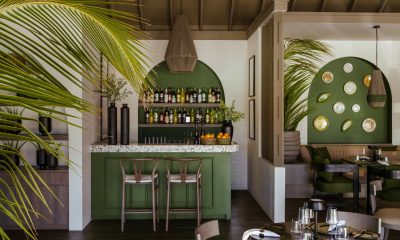
 Drink1 week ago
Drink1 week agoSun Siyam Olhuveli unveils Milano, Olive Bar and Crust & Flame on Dream Island
-
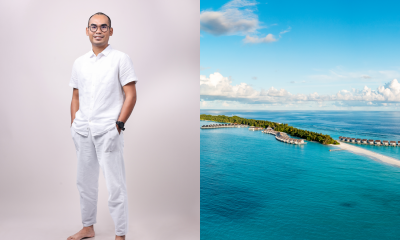
 Featured1 week ago
Featured1 week agoKuramathi Maldives announces private wellness programmes with Imron Zulfikar
-

 Entertainment1 week ago
Entertainment1 week agoHulhule Island Hotel names 2ofus as New Year’s Eve 2026 headline act
-
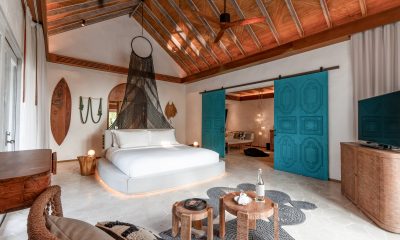
 Featured1 week ago
Featured1 week agoSpring reawakens: Sirru Fen Fushi showcases Maldives at its calmest
-

 Cooking5 days ago
Cooking5 days agoThe St. Regis Maldives Vommuli Resort welcomes Chef Renzi Gianluca for Tastemaker series collaboration
-

 Cooking1 week ago
Cooking1 week agoChef Frank Fol leads plant-based culinary programme at ananea Madivaru Maldives
-
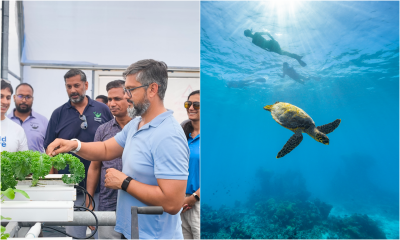
 News1 week ago
News1 week agoThe Standard, Maldives achieves Green Globe Certification after rigorous audit



